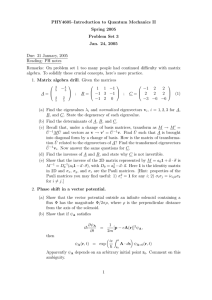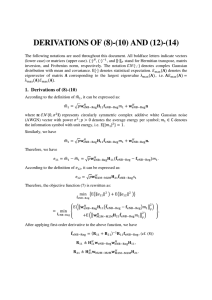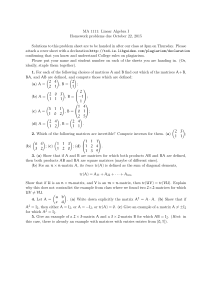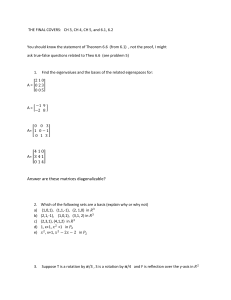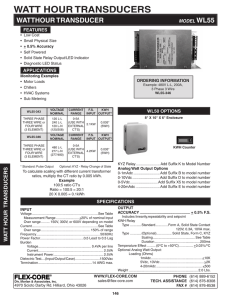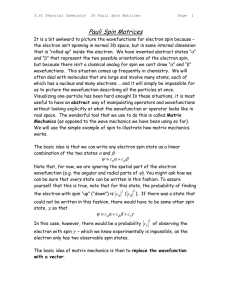PHZ 3113 Fall 2011 – Homework 9 on Friday, November 11.
advertisement
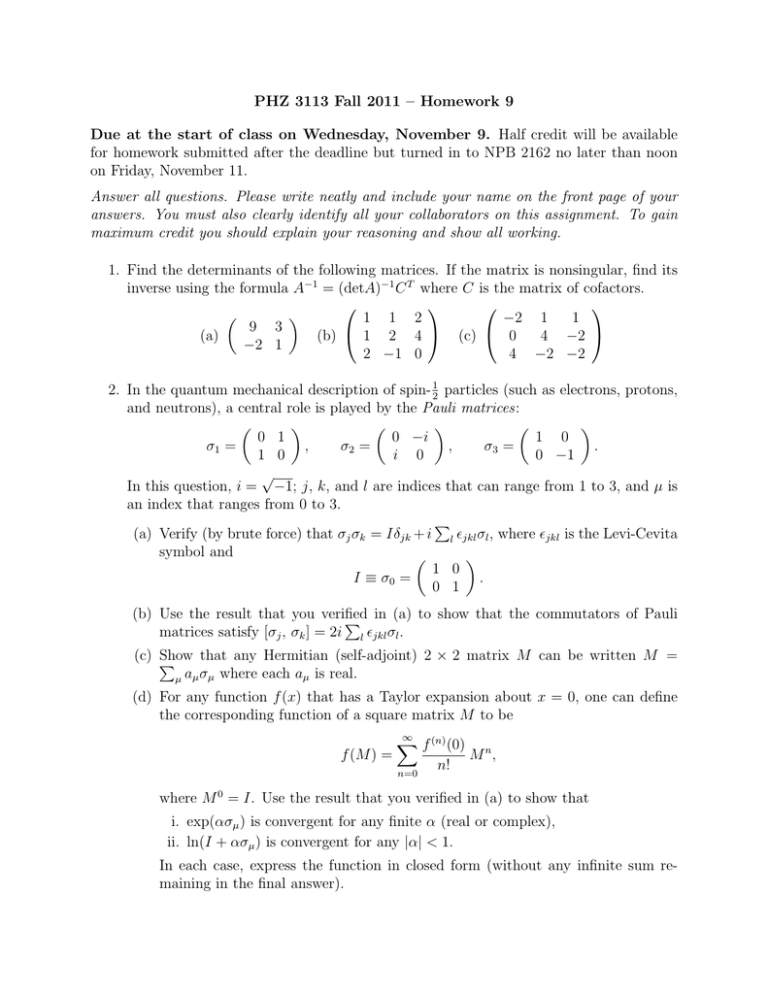
PHZ 3113 Fall 2011 – Homework 9 Due at the start of class on Wednesday, November 9. Half credit will be available for homework submitted after the deadline but turned in to NPB 2162 no later than noon on Friday, November 11. Answer all questions. Please write neatly and include your name on the front page of your answers. You must also clearly identify all your collaborators on this assignment. To gain maximum credit you should explain your reasoning and show all working. 1. Find the determinants of the following matrices. If the matrix is nonsingular, find its inverse using the formula A−1 = (detA)−1 C T where C is the matrix of cofactors. 1 1 2 −2 1 1 9 3 4 −2 (a) (b) 1 2 4 (c) 0 −2 1 2 −1 0 4 −2 −2 2. In the quantum mechanical description of spin- 12 particles (such as electrons, protons, and neutrons), a central role is played by the Pauli matrices: 0 1 0 −i 1 0 σ1 = , σ2 = , σ3 = . 1 0 i 0 0 −1 √ In this question, i = −1; j, k, and l are indices that can range from 1 to 3, and µ is an index that ranges from 0 to 3. P (a) Verify (by brute force) that σj σk = Iδjk + i l jkl σl , where jkl is the Levi-Cevita symbol and 1 0 I ≡ σ0 = . 0 1 (b) Use the result that you verified P in (a) to show that the commutators of Pauli matrices satisfy [σj , σk ] = 2i l jkl σl . (c) P Show that any Hermitian (self-adjoint) 2 × 2 matrix M can be written M = µ aµ σµ where each aµ is real. (d) For any function f (x) that has a Taylor expansion about x = 0, one can define the corresponding function of a square matrix M to be f (M ) = ∞ X f (n) (0) n=0 n! M n, where M 0 = I. Use the result that you verified in (a) to show that i. exp(ασµ ) is convergent for any finite α (real or complex), ii. ln(I + ασµ ) is convergent for any |α| < 1. In each case, express the function in closed form (without any infinite sum remaining in the final answer).
